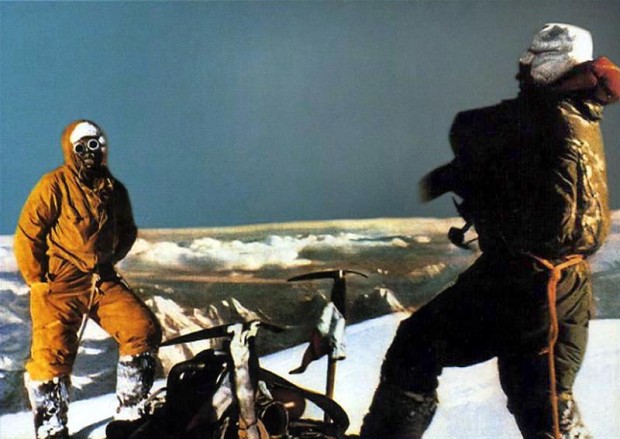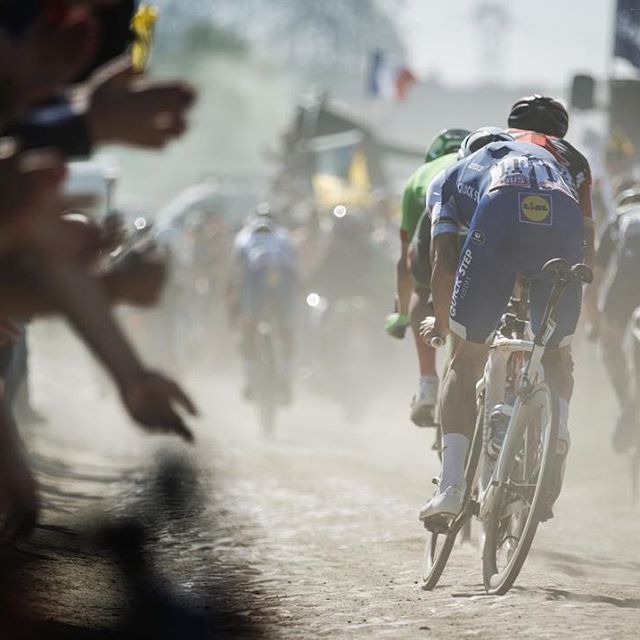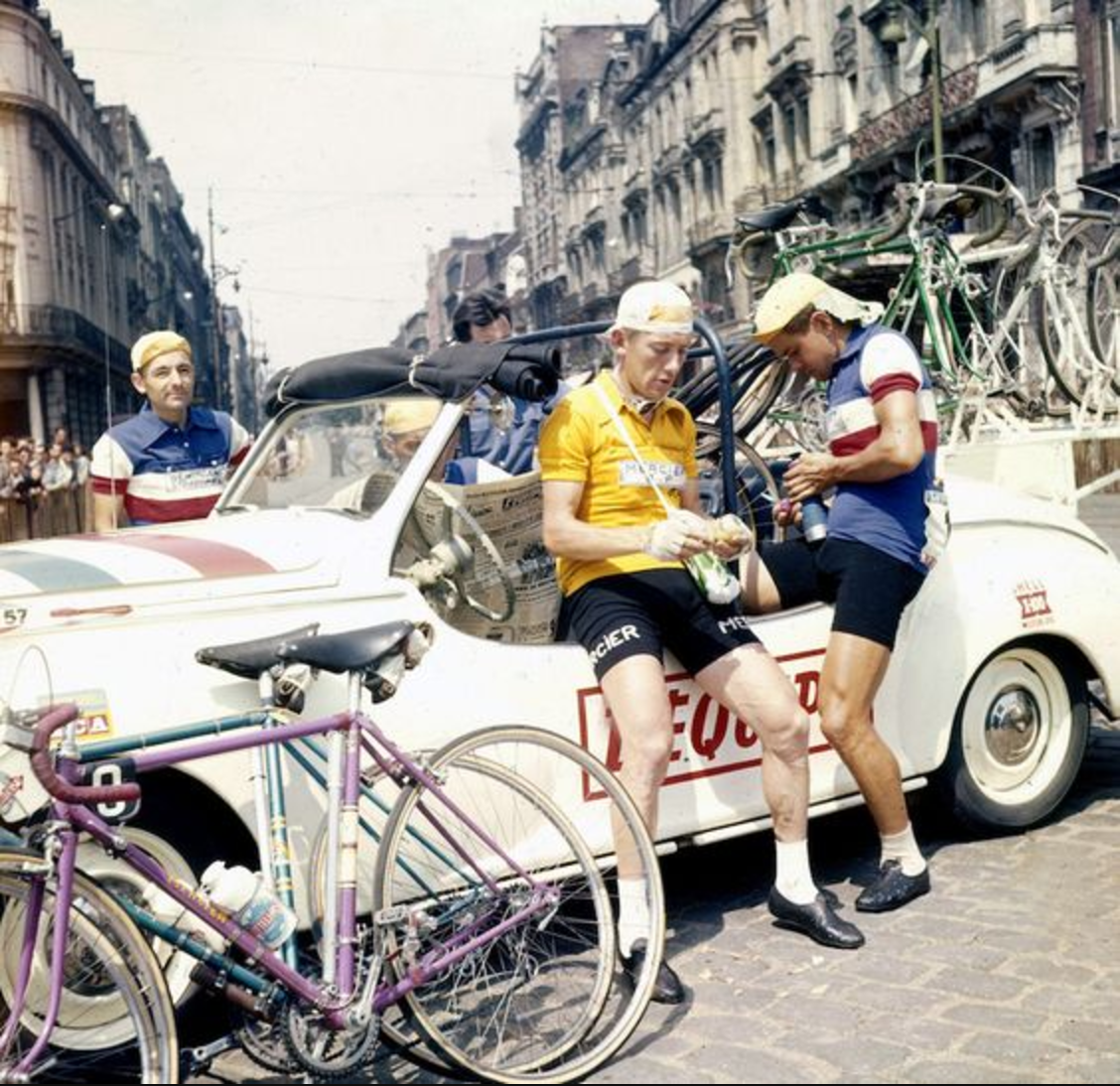Doping: The Acceptability of a Method

Performance-enhancing methods. This is a term we hear so often in cycling; it refers to the practice of using products or processes that elevate your performance beyond what you could naturally do. It is a terribly complicated matter for the fans, and I can only speculate as to how complicated it is for the professionals who do or do not participate in the practice. Doping occupies an indelible place within our sport; faire le métier means “to do your work” in French. In a greater context, it means to conduct yourself as a professional. Within the narrow scope of cycling, faire le métier means to dope. It seems the practice of doping is so deeply embedded in our great sport that the two can hardly be separated.
I recently read K2: Life and Death on the World’s Most Dangerous Mountain, by Seattle mountaineering icon Ed Viesturs. Ed was the first American to summit all fourteen mountains over 8000 meters and only the fifth climber to do so without relying on bottled oxygen. The book focuses specifically on the history of the attempts to summit the world’s second-highest peak and details the circumstances surrounding the various accidents that have resulted in the loss of life during those attempts.
A recurring theme in mountaineering is the effect that being at high altitude has on the body and mind. Being at high altitude has various physiological complications – some of which can be treated, like muscle deterioration and cerebral edema, and some of which that can not, like death. The lack of oxygen to the brain diminishes cognitive capabilities with the unfortunate effect of increasing risk of accidents through making poor decisions in an environment where the margin of error is often already greatly diminished due to external factors. Using bottled oxygen can help alleviate many of these problems; it improves a climber’s health at altitude and improves their ability to reason, reducing the risk of errors made through lapses in judgement. Climbers like Viesturs who are able to summit the highest peaks without using bottled O2 are rare; for most they are impossible to reach without oxygen.
The first successful summit attempt on K2 was made by an Italian team in July of 1954. The circumstances that surrounded that summit bid have fed a fifty-year debate in the climbing community, the salient point of which is that the summit team claimed to have reached the summit without using supplemental oxygen, while photographic and circumstantial evidence suggests that they did.
The controversy sounded a lot like that surrounding doping in cycling and it got me wondering what it is, precisely, about riders using performance-enhancing methods that bother us so. After all, the use of supplemental oxygen amounts to the same thing as does doping: athletes are using an external method to enhance their performance on the world’s highest peaks. “Performance-enhancement” in this case may mean “staying alive”, but never-the-less, being alive does represent a pronounced performance enhancement over being dead and it is the use of an external method that makes the feat possible, or at least more healthy and less risky.
It surprises me that few, if any, in the climbing community consider the use of bottled air to be doping. Debates rage over the purism of it’s use, but those swing wide of labeling the practice as cheating. Looking at the matter objectively reveals little difference between supplementing blood with red-blood cells in order to compete in a three-week bike race and using supplemental oxygen to reach a mountain top. Both techniques utilize an external mechanism to improve the body’s ability to get oxygen to it’s muscles and thereby improve performance. Some doctors have even gone so far as to state that racing a Grand Tour is dangerous for most riders and have justified their involvement in doping practices by claiming that the use of EPO and other drugs make the sport of bike racing more healthy and less risky for the athletes.
There is a void in my brain at the spot where I’m supposed to store the justification for why using EPO and blood transfusions in cycling is labeled as ‘doping’ while the use of supplemental oxygen in mountaineering is not. It appears, however, that in mountaineering we have two conditions that work together to justify the use of the practice: the mountaineers are transparent about whether or not they use supplemental oxygen, and the community largely agrees with the assertion that it’s use is required in order to accomplish their feats. In cycling, neither of these conditions are met: cyclists are not transparent about whether they dope or not, and the public disagrees with the assertion that it is unhealthy to participate in races like the Tour de France without the use of performance-enhancing products or methods.
I think many in the professional peloton believe they need to dope in order to compete in a Grand Tour. The public, by and large, disagrees. Frankly, I don’t think either party has the data to justify their claim. Such data would need to come not from a lab, but from data collected from the professional riders in a three-week stage race. The difficulty in accumulating this data is that we are evidently pretty bad at figuring out if a rider is doping or not, and as such it would be difficult to say whether such data is valid or not. If we somehow overcame that obstacle and definitively found that either yes, it’s dangerous, or no, it’s healthy, then we could start to build an objective case for or against using these processes – both inside the peloton and with the public – and start dealing with the matter rationally. For doping to stop, the riders have to believe they can do without their use. And if a three-week race can’t be done in a healthy and safe way without using performance-enhancing methods, then public needs to accept they are required in order for the athletes to safely accomplish their feats. Their use should then be regulated and used in a medically safe way.
What it comes down to is the acceptability of a method through the justification of it’s use, and cycling community has failed entirely in building that justification. That leaves us with a terribly complicated matter on our hands which few are equipped to handle appropriately.


@Jarvis
And it trickles up, too. The Masters races here are, well, fast. Super duper galactic fast for a bunch of guys with real jobs and real money. The kind of real money that paid Joe Papp.
Seriously, I don’t advocate PEDs. The use of PEDs in cycling leaves me with a wicked case of cynicism when I watch the big Tours (thanks, Di Luca).
Just a little background info: I lived in Austin and raced in the 80’s. Because of the Tour of Texas, I got to know really great racers. And the local scene was really talented. I worked in LBS’s and for importers/wholesalers through college and a little thereafter. I got out entirely in 1991. I didn’t follow racing at all until about three years ago when I started riding again. Bought me a cheap Cervelo so I had a bike that went click, went all the way to 10, and weighed under nine kilos. I ain’t putting up a picture of that bike on The Bikes. It’s straight out of the box.
By the way, I had no talent. I raced as a cat. 3 and for the University of Texas. Really, I sucked, but I had a good time and met some good people. One of my old teammates is Craig Staley, the guy who runs Mellow Johnny’s. (Even if you don’t like COTHO, buy a little somethin’ so Craig can feed his kids.)
Leman was my guy. My dad and I took some awesome pictures of him at the Red Zinger/Coors Classic in his rookie year, 1981(?). I also have pictures of Eric Heiden from the same stage, I think in Snowmass. (He didn’t even climb well for his weight, but his ankle was pretty heavily taped that day.)
Still, I do laugh my ass off at the SNL All Drug Olympics. Makes be blow a little snot bubble out of my nose, I laugh so hard.
Now let’s all go spend a little time at the Five and Dime today. Cheers!
Frank,
top article – and an awesome response (which may be the proof) (Including Mark F Twight for heavens sake)(and an education from David Falt).
Sorry this is so late btw – it takes a while to work thro all the old posts.
And while I have your attention – can I get a jersey now please? I still seem to rate a 4 cog which can’t be right.
back on line …
@Frank
“And if a three-week race can’t be done in a healthy and safe way without using performance-enhancing methods, then public needs to accept they are required in order for the athletes to safely accomplish their feats.”
Sorry – no.
Maybe “Then the public needs to accept that the format for three-week races needs to change”
If the length of the race is a doping determinant, how come track sprinters get caught?
Going back through the archives (I’m hungover, it’s Friday, ergo I don’t wanna work) I can’t believe I missed this the first time.
Cracking article @Frank & some great discussion.
Not sure how I came across this before but this article JV did for cycling weekly in the UK makes for very interesting reading.
@KitCarson
There’s no reason to believe that quiet acceptance of performance-enhancing drugs would make cycling less popular.
In the US, American football is the most popular sport, and nearly all professional players use steroids. It’s quasi-open, and fans accept it. (They do officially ban it, but have a very weak testing regime, and few penalties.)
Whereas with cycling, 90% of the general public news coverage is about performance-enhancing drugs. To grow the sport needs to find a different way, and witch-hunts against its stars isn’t it.
1924
Henri Pélissier, Francis Pélissier, Charles Pélissier of France. In 1924, following their abandon of the Tour de France, the first real drug scandal arose when the Pélissier brothers gave an extraordinary interview to journalist Albert Londres. They said that they used Strychnine, cocaine, chloroform, aspirin, “horse ointment” and others drugs to keep going.
Interesting article. I gotta go with Twight on this one though from the climbers perspective. Bottled O’s are mountaineerings EPO. The small community of climbers argue about this pretty often, as have I drinking around the campfire (see, more shit in common).
If you can’t get up the mountain with the genetics you were born with, perhaps you shouldn’t be up there. 1996 on Everest proved this. There were a bunch of small events that snowballed to disaster, but it’s my humble opinion that O2 (or lack thereof) was the pulled lynchpin.
scaler – I think that is a really excellent point about genetics & respect for the task at hand. For awhile now I’ve been interested in the democratization of sport, where everyone wants to try it out, give it a whirl. In climbing it could be something like attempting to summit a staggering mountain without putting the training, focus, and commitment, plus relying on oxygen.
But I think you can see it in far more pedestrian sports, say like rollerblading. If you can push skate without poles, wrist guards, elbow guards, knee pads and a full helmet, maybe you should stick to jogging?
I know I’m comparing something that involves the threat of death and something that involves the threat of a skinned elbow, but with the explosion in coverage of extreme sports I am interested in the connection, and growth, of people who have never really been athletically inclined to try something better left to the skilled, committed folks.
But, this can happen as well on any weekend group ride that is open. You get someone who is beyond their abilities & once the suffering starts, they are dangerous to themselves & others because they can’t steer.
@scaler911
I helped guide on Rainier one year and we came across this guy on our descent who had HAPE going on above Ingram Flats. I pulled out some dex that I carried with me to try to help out and the guy’s partner said that he was already using a ton of dex before he started to try to help him get to the top. The guy had taken it at Paradise so that he would have a better chance of making the top. This, to me, is where the real danger lies. Taking stuff to try to get further before you are in any trouble and then when the shit hits the fan, you can no longer turn to it for help.
When I climbed in South America and Nepal, I always had dex and some form of amphetamine with me in case I got into trouble, but I never used it prophylatically (and fortunately never had to use it at all). Never went over 22,000 feet so never had to make the O2 decision.
Man, all this climbing talk is making me want to do some mountaineering which I haven’t done since my VMH became pregnant with our first child.
Looking around my village I wonder how many people have actually pushed themselves to the point where they’re properly running out of breath in an all out effort any time in their adult lives.
We get regular rescues on our local hills with people having heart attacks. Whilst I know its perfectly possible to be very fit and have a heart attack (I lost a friend under those circumstances a few years back) I suspect that the walk from the car to the top of the hill was the most they’ve done in years in many cases.
Democratization of sport is the way to go (hello triathlon) – sports should never be exclusive. But getting some level of fitness is effectively free (go for a run – you can do that barefoot in your underwear and evade capture whilst you’re at it).
So want to ride a bike in the club? Do some rides at a reasonable pace on your own to make sure you can hack 40kms without having a rest, Want to climb K2? Get fit enough that you don’t need to rely on chemicals or 02. If you can’t do either its no disgrace and if you practice cycling often enough you’ll get there – guaranteed – whatever level you want to be at.